Step 1: Anticipation
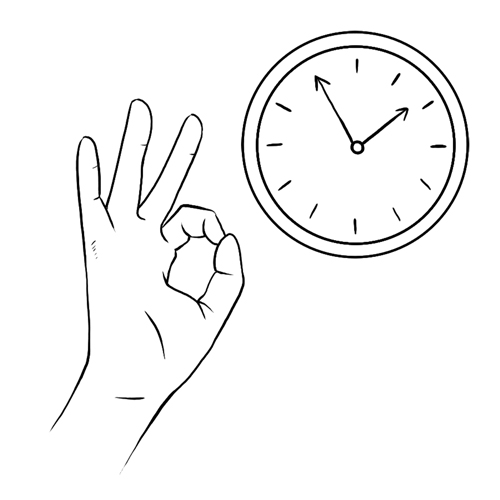
|
See the full description here
Summary:
Collaborate and form a team with your child. When you invest the time to form a strong team, children feel more comfortable and less anxious – this will help you complete the care with less stress – for you and your child.
Use these tips, from the start, to set the stage for a positive care procedure:
- Create the right moment: integrate the care in a routine.
- Alert your child to the needed care and communicate together.
- Form a team with your child: Encourage autonomy by offering realistic choices such as the method of distraction. Stay tuned to your child. Manage pain and anxiety, using distraction and positioning for comfort.
|
|
Step 2: Preparation
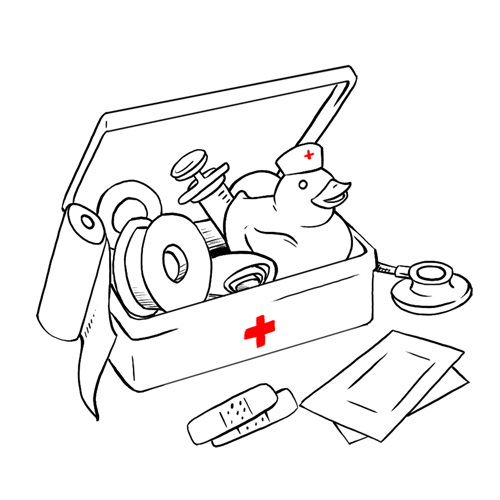
|
See the full description here
Summary:
- Prepare the environment: Identify a routine place for care. Close windows, doors and fans. Wash and dry the work surface and gather the needed materials for the care and to distract your child.
- Prepare your child: Get help if needed. Position your child for comfort to receive the care and start to use the selected distraction method.
- Prepare yourself: Find the right time when you are ready to provide the care safely. Review the list of care steps. Wash your hands.
Now that you are ready to start the care procedure, take the opportunity to encourage and praise your child.
|
|
Step 3: Procedure

|
See the full description here
Summary 3 key concepts:
- Safety: Carefully follow the care practice steps as you have been taught.
- Flexibility: Be ready to adjust according to your child’s reactions during the procedure. As needed, reposition or select an alternative distraction strategy. Follow your child’s pace and rhythm.
- Collaboration: Reassure your child, verbally and non-verbally. Acknowledge your child’s emotions and reactions. Help your child differentiate between the different sensations during a procedure.
|
|
Step 4: Prepare the material
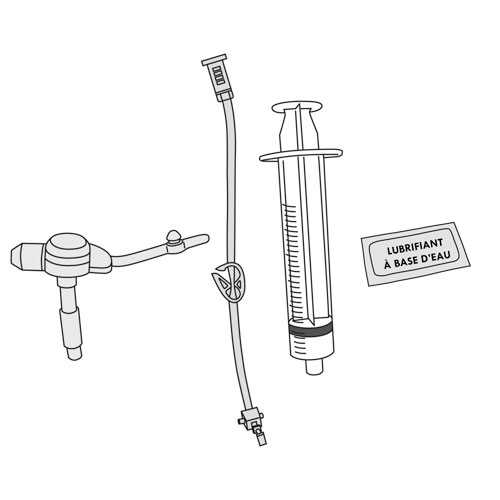
|
- Set up on a flat surface or a well-cleaned table.
- Gather the necessary equipment.
- Remove the new button from its packaging.
- Remove the extension set from its packaging or container.
- Inspect the button and extension set for damage.
- Open the lubricant packet; place a small amount of lubricant on the open package of the button.
- Fill syringe #1 with the amount of water needed to inflate the new button balloon, according to the manufacturer’s recommendations or as directed by your healthcare team.
- Fill syringe #2 with the amount of water needed to irrigate the extension set as recommended by your healthcare team.
Why ? This step ensures that the required materials are on hand in order to start the procedure.
|
|
Step 5: Check the function of the new button balloon
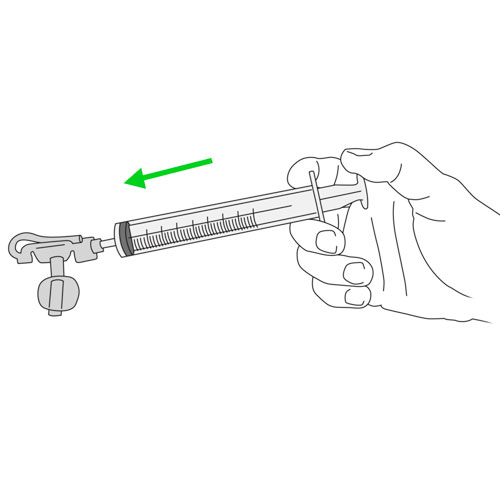
|
- Hold the sides of the button with one hand.
- With the other hand, connect the tip of syringe #1 into the balloon port until the connection is solid.
- Depress the plunger of the syringe to inject the full amount of water into the balloon.
- While leaving the syringe connected and maintaining pressure on the plunger, check that the balloon is intact and properly inflated.
- If the balloon does not leak, remove the water from the balloon by withdrawing the plunger.
- Leave the syringe filled with water connected to the balloon port.
Why ? This step is used to check if the balloon is functioning properly and has no leaks.
Holding the sides of the button will stabilize it during this step.
Screwing the tip of the syringe into the balloon port opens the balloon fill valve.
|
|
Step 6: Position your child
|
Step 7: Lubricate the new button
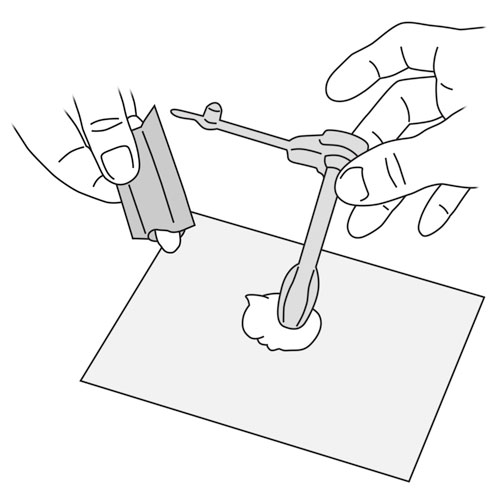
|
Spread a sufficient amount of lubricant on the tip of the new button.
Why ? Lubrication makes the button insertion easier and more comfortable for your child.
|
|
Step 8: Deflate the balloon from the old button, if in place
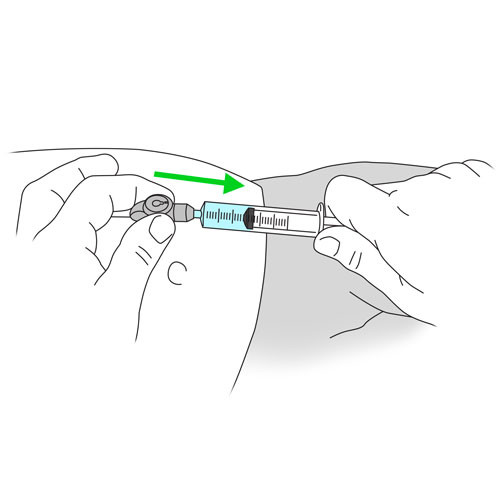
|
If the old button is not in place, go to step 10.
- Hold the sides of the button with one hand until the end of the step.
- With the other hand, connect the tip of syringe #3 into the balloon port of the old button until securely connected.
- Remove water from the balloon by withdrawing the plunger.
- If the water does not return, there may be no water left or the syringe may not be inserted deep enough; push the syringe a little more into the balloon port and try to remove the water again.
- When all the water has been removed, disconnect the syringe.
- Set the syringe aside.
Why ? This step is necessary to avoid injuring the stoma while removing the old button.
Holding the sides of the button helps stabilize the button during the step.
Screwing the tip of the syringe into the balloon port opens the balloon fill valve.
|
|
Step 9: Remove the old button, if in place
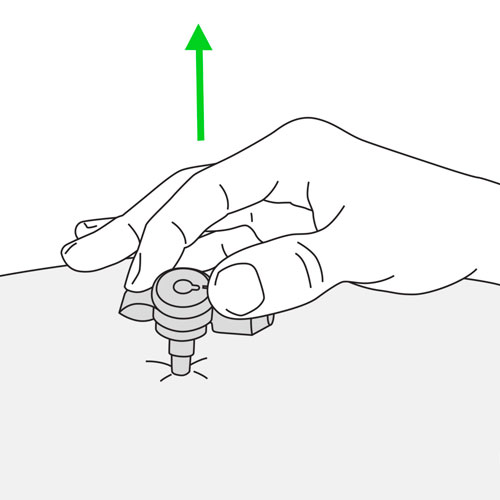
|
- Put one hand on your child’s belly and then slowly remove the button pulling vertically with the other hand.
- Even if you feel a little resistance, continue gently but DO NOT FORCE.
- Use this time to observe the stoma and the skin around it.
- Wipe the skin with the towel if any gastric secretions come out of the stoma.
Why ? This step is necessary to install the new button.
There may be a small amount of resistance as the old button is removed, even if the balloon is correctly deflated.
|
|
Step 10: Insert the new button in the gastrostomy
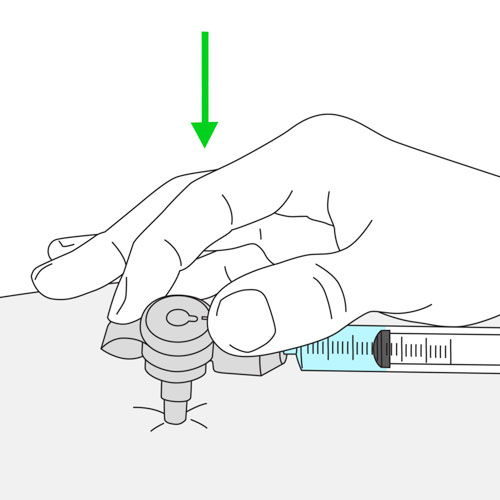
|
- Gently insert the button vertically through the stoma until it is flush with the stomach wall.
- Try inserting the button as your child takes in a breath, when your child is usually more relaxed.
- Slight pressure may be needed to insert the button, especially if your child cries during the procedure, but NEVER FORCE TO INSERT THE BUTTON. Try to calm your child down before continuing.
Why ? This prevents injury to the gastrostomy during insertion of the button.
There may be a small amount of resistance as the new button is inserted, even if the balloon is correctly deflated.
It may be a little difficult to insert the button if your child is crying because this causes the abdominal muscles to contract.
|
|
Step 11: Inflate the button balloon
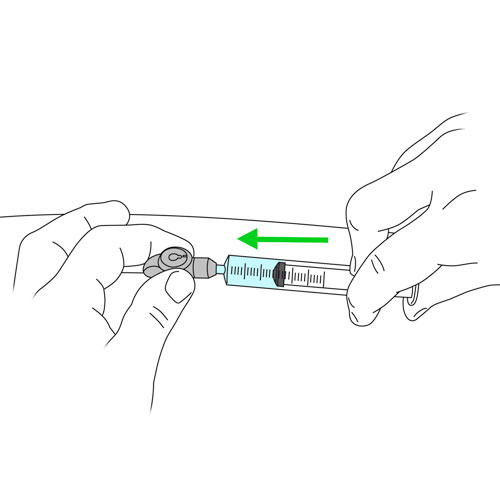
|
- When the button is properly inserted, hold the sides with one hand until the end of the step.
- Depress the plunger of syringe #1 (already connected to the balloon port) with the other hand to inject the full amount of water into the balloon.
- Disconnect the syringe from the balloon port by holding the plunger.
- Set the syringe aside.
- Make sure there is a distance of about a dime between the button and the belly.
- Turn the button at skin level; you should be able to do this without any problem.
Why ? Inflating the balloon properly ensures that the button remains in place in the gastrostomy.
Holding the sides of the button helps to stabilize it during the step.
Holding the plunger when disconnecting the syringe prevents water from coming out of the balloon.
The ability to rotate the button confirms that it is not too deeply inserted into the gastrostomy.
|
|
Step 12: Irrigate the button extension set
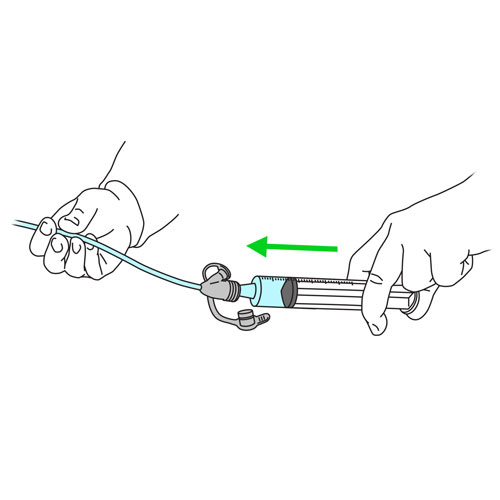
|
- Remove the cover from the extension set feeding port, if in place.
- If the extension set has two ports, make sure the medication port is closed.
- Connect the syringe #2 to the end of the extension set.
- Make sure the extension set clamp is open.
- Depress the plunger of the syringe to inject water all the way to the end of the extension set.
- Close the clamp on the extension set.
- Leave the syringe connected to the extension set.
Why ? This step ensures that the extension set tubing is filled with water and ready to flush into the button feeding port.
|
|
Step 13: Connect the extension set to the button
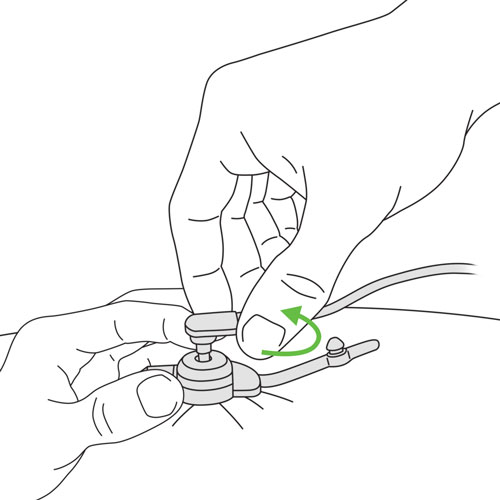
|
- Remove the cover from the button feeding port, if closed.
- Hold the sides of the button and insert the extension set into the feeding port.
- Lock the extension set into the button, according to the manufacturer’s instructions or those of your healthcare team.
Why ? This step prepares for verification of the button location and irrigation.
Holding the sides of the button helps to stabilize it during the installation of the extension set.
|
|
Step 14: Check the location of the button
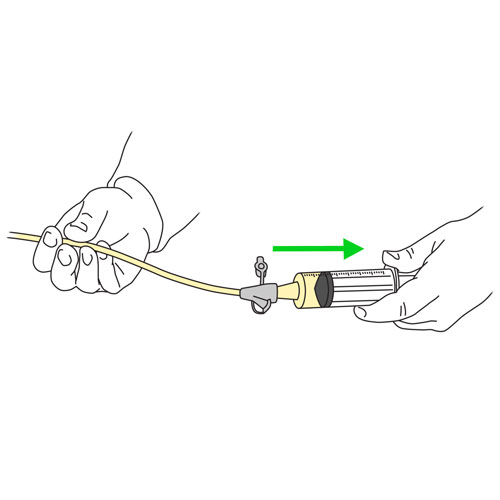
|
- Open the clamp of the extension set.
- Gently withdraw the plunger of the syringe #2 (already connected to the extension set) to draw some gastric secretions into the syringe.
Why ? This step confirms that the button is installed correctly in the stomach.
|
|
Step 15: Irrigate the button

|
- Slowly depress the plunger of syringe #2 to push back the gastric secretions and flush water from the extension set into the button.
- When the syringe is empty, close the clamp of the extension set.
- Disconnect the syringe.
Why ? This step ensures that the button is patent, ready to use and reduces the risk of the button being blocked with debris.
|
|
Step 16: Administer the formula, if applicable

|
Go to the next step if you want to give your child medication instead.
- Proceed with the administration of the nutritional formula as planned for your child.
- Observe your child for any signs of discomfort when the feeding session is started (eg, nausea, vomiting, difficulty breathing, abdominal pain, sweating, etc.).
|
|
Step 17: Administer medication, if appropriate
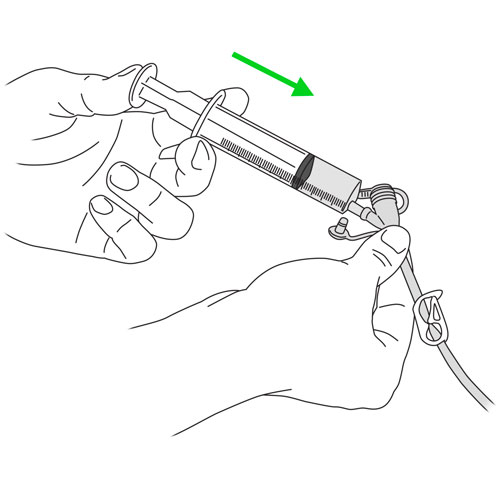
|
Go to the next step if the button is not used immediately.
|
|
Step 18: Disconnect the button extension set

|
If you do not use the button immediately:
- Hold the sides of the button.
- Unlock the button extension set, as directed by the manufacturer or your healthcare team.
- Remove the extension set from the button feeding port.
- Put the cover on the button feeding port.
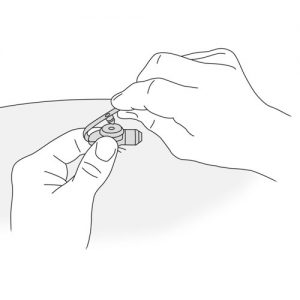
Why ? Removing the extension set prevents your child from accidentally pulling on it, moving the button and causing irritation at the insertion site. In addition, an unused extension set is cumbersome.
Holding the sides of the button helps stabilize the button while the extension set is being removed.
Closing the cover prevents leakage of the stomach contents through the button in between feeding sessions.
|
|
Step 19: Clean and store equipment
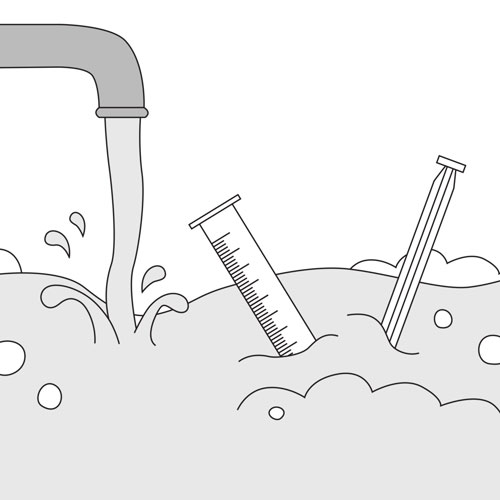
|
Clean, maintain and store equipment as recommended.
Why ? This step is necessary to ensure cleanliness and proper functioning of the equipment for the next use.
|
|
Step 20: Recovery
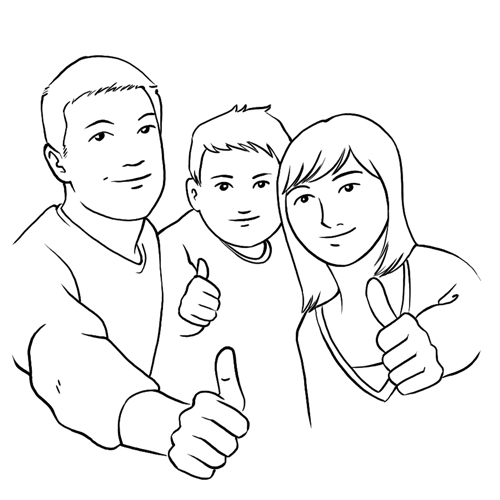
|
See the full description here
Summary:
The treatment is finished. Wash your hands again.
Be prepared to recognize the challenges faced and to provide positive feedback. Help your child recognize his/her strengths. Acknowledge the collaborative teamwork.
- Listen to what your child says about the parts of the procedure that were difficult or painful.
- Comfort your child and recognize your child’s collaboration with positive feedback.
- Highlight your child’s specific strengths that helped make the procedure positive.
- Discuss with your child what might be done the same or differently the next time the care is needed.
- Keep your promises if you have promised a reward, follow through.
- Reward yourself too.
|
|
![]()